Need another reason to get growing? Having a plant does more than make you feel like you've got this whole #adulting thing down. One 2015 study in the Journal of Physiological Anthropology found that interacting with indoor plants can can reduce both physiological and psychological stress. Horton has reaped the rewards herself. "When you introduce plants into your life, it has a positive impact on your mental health—I can attest to that myself," she says. "Plants have kind of saved me, in a sense, because they give me the ability to calm my anxiety and refocus my energy into something more productive." Plus, adding some green helps purify the air in your home by filtering out everyday pollutants (more on that in a sec).
Related: Top 24 Best Gifts for Gardeners
Add these indoor plants to your home, and you'll start experiencing all the healthy benefits ASAP.
1. Snake Plant
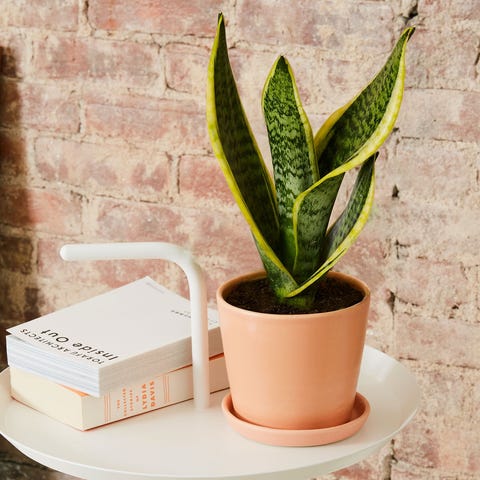
Don't let the name fool (or more likely, scare the crap out of) you. Marino explains that the snake plant simply gets its name from the thin, upright leaves with "irregular green banding" that look like—you guessed it—snakeskin.
Besides looking cool, it's a low-maintenance plant that's known for surviving droughts, making it perfect for newbies living in almost any environment. "Although the snake plant prefers bright light, it can survive lower light levels," she adds.
Snake plants have also been shown to filter out nasty chemicals, like benzene, formaldehyde, trichloroethylene, xylene, and toluene, so you can breathe easy having this in your home.
2. Monstera Deliciosa
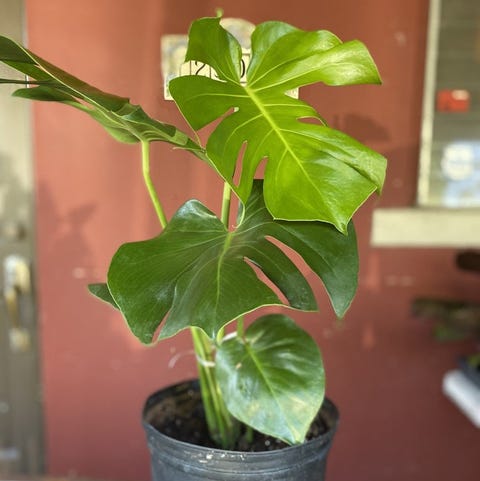
These trendy plants are one of Horton's faves not just because their eye-catching look is oh-so-'grammable, but because "once you get them going, they're easy growing." Especially during the warmer season, expect to see a new leaf weekly. Plus, you can easily propagate them (a.k.a. split off a leaf with a node and give it to a friend to grow their own).
Best part: You only need to water a monstera deliciosa every one to two weeks, letting the soil dry out between waterings, per The Sill. Plus, it's perfect if your place doesn't get direct sunlight—all it needs is a spot that receives bright to medium indirect light.
In general, large-leafed philodendron plants, including the monstera deliciosa, were shown to be one of the most effective at reducing air pollutants, like benzene, trichloroethylene, and formaldehyde, according to a NASA study.
3. Pothos
"Sometimes referred to as the 'cubicle plant,' the pothos is a great pick if you're a self-proclaimed 'black thumb,' says Marino. (Just so you know, a 'black thumb' is the total opposite of a 'green thumb.') And while this plant starts out small, its trailing vines can grow to over 10 feet long (WOW), even indoors where lower light and dry air make conditions less than ideal.
As an added bonus, this plant is super easy to grow, adds Marino, and propagates (translation: breeds more pothos) in water. While you'll need to learn how to propagate a Pothos plant, you can basically get as many plants as you want for the price of one. And like the snake plant, the pothos filters benzene, formaldehyde, xylene, and toluene.
4. Dracaena
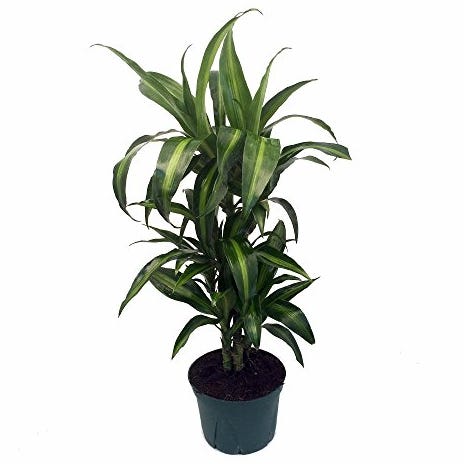
If you live a high-maintenance life—always on the go, out at all hours—you need an "easy going, low-maintenance plant, like the Dracaena," says Juliette Vassilkioti, co-founder and president of My City Plants. The Dracaena is great, she explains, because it can easily adapt to different light environments, though it's best to keep it away from direct sun.
"The hardiest of of these group is Draacena Lisa," she explains. "It can deal with indoor temperature and season changes better than others." When it comes to purifying the air, though, the Dracaena Marginata Plant is your best bet. It removes benzene, formaldehyde, trichloroethylene, and xylene.
5. ZZ Plant
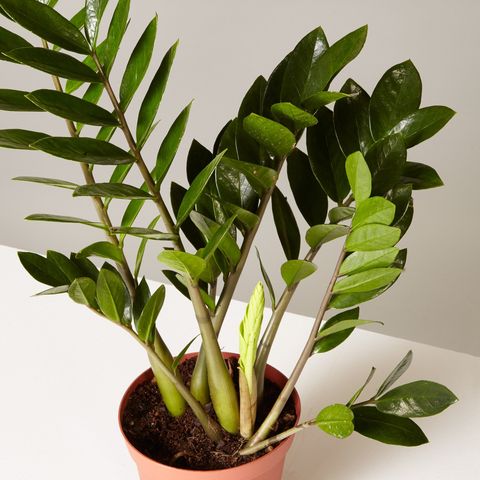
If you live in a lower light environment, Marino and Horton suggest getting a ZZ Plant because they're drought tolerant and incredibly low maintenance. You might notice the ZZ has large potato-like rhizomes (a.k.a. horizontal stems that continuously grow) under the surface of its surrounding potting mix.
These rhizomes, Horton explains, are "hearty," storing water that helps the plant survive drought in its natural environment. She recommends watering it once a month during the growing season (spring and summer) and once every two months when it goes dormant in the fall. "It's a great plant to have if you're somebody who happens to travel a lot," Horton adds.
Oh, and Marino notes that many cultures believe a ZZ Plant "symbolizes prosperity and friendship," making it a great housewarming gift.
6. Spider Plant
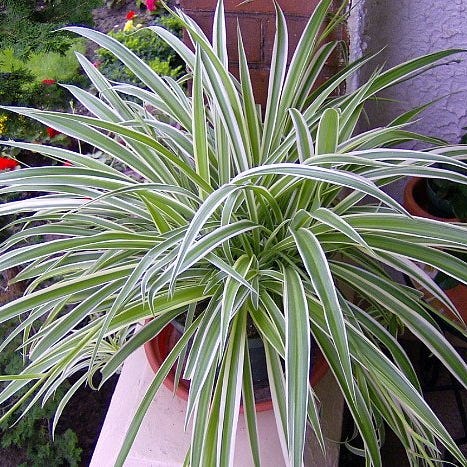
Plants that give off "instant jungle vibes," like the spider plant, are having a serious moment right now, according to Marino. And they're super easy to care for, says Vassilkioti. These plants need bright light, but no direct sun, so they're perfect to put in a room with big windows. Just keep it away from the windowsill.
Vassilkioti adds that this plant is fun to have around because it grows "baby spiders" (spiderettes), which can be easily propagated. It's also a strong air purifier, removing both formaldehyde and xylene.
7. Rubber Tree

If you have a tendency to forget about your plants, or are new to the whole "plant parent" lifestyle, get a rubber tree. According to Vassilkioti, they're "tolerant to some degree of neglect" (phew) and "handle under-watering better than over-watering."
Sound like your kind of plant? Great, just know that a rubber tree needs bright light (can take some partial sunlight) and a good amount of space around for it to be happy, grow, and remove carbon dioxide from your home.
8. Bird’s Nest Fern
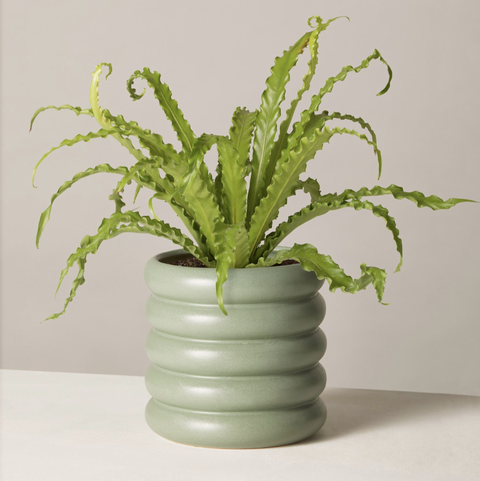
Having a bird’s nest fern in your home is an instant conversation starter, thanks to its bright green, ripple-edged fronds. You'll score major cool points with this signature-looking plant, especially if you put it in a hanging planter, as Marino recommends.
Because the bird's nest fern thrives in medium indirect light and a humid environment, Marino says, "it would do great in a bathroom with a shower, as long as there are windows that receive natural light."
Ferns have been shown to filter formaldehyde, xylene, and toluene, so it's not a bad idea to put one in your bathroom. After all, that's where you're likely to use household toxins, like harsh cleaners, hairspray, and nail polish remover that often contain these chemicals.
9. Peace Lily

If you already have experience keeping an indoor plant alive (congrats), then it might be time to add a peace lily into the mix. Vassilkioti says this one requires more attention compared to other indoor plants. That means keeping it moist without over-watering and placing it in a bright but shady spot, she explains.
One thing to note: "The peace lily's flowers have pollen, so this plant might not be the best choice for people who struggle with allergies," says Vassilkioti.
If that's not a problem for you, she recommends putting a peace lily in your bedroom since it produces oxygen at night, while most other plants do that during the day. Besides producing oxygen, this plant also removes ammonia, benzene, formaldehyde, and trichloroethylene.
10. Philodendron Green
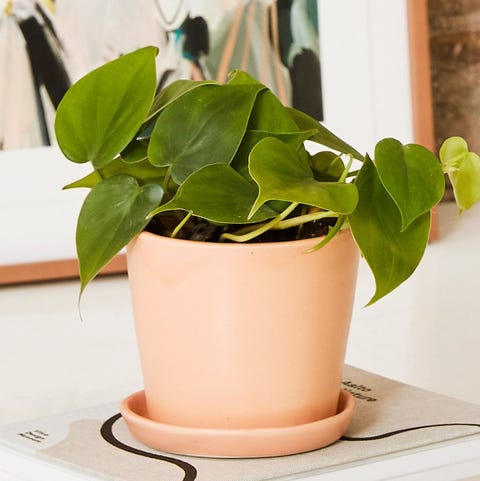
"In the right indoor conditions, the philodendron’s heart-shaped leaves and trailing vines can grow to over 10 feet long, like the pothos," says Marino. This makes it a great plant if you've got high shelves, or want to add a hanging planter to your home decor (the ultimate in #adulting).
Also like the pothos, it's "incredibly easy to prune and propagate, if you prefer a more compact shape," she adds. It's also one of the easiest houseplants to grow.
Though it's not the most air-purifying plant out there, philodendrons do filter formaldehyde. Not too shabby for a low-maintenance plant that's perfect for newbies.
11. Aloe Vera
"This plant isn't just easy to care for, it's also known as a healer," says Vassilkioti. "Aloe vera juice has anti-inflammatory and anti-bacterial properties." So not only can you use this plant to brighten up your home, but you can also use it to heal wounds and different skin conditions.


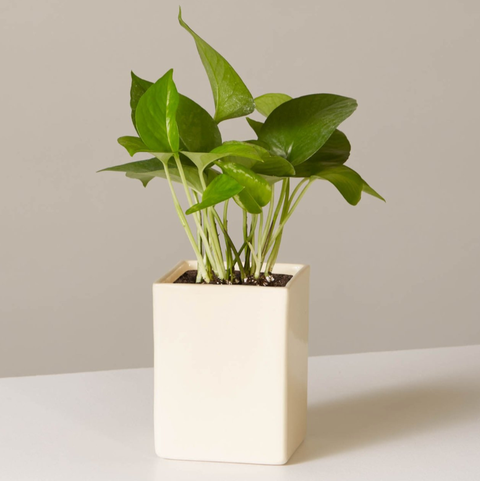







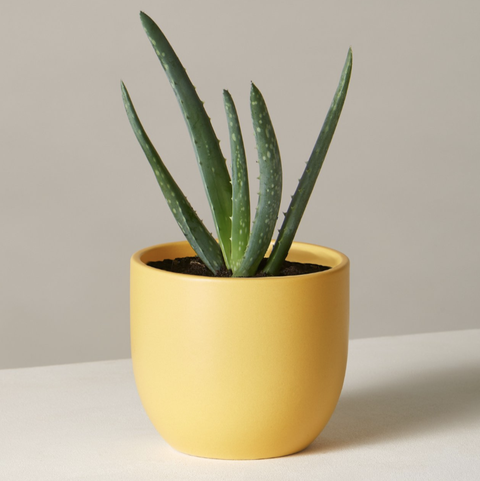




Comments
Post a Comment